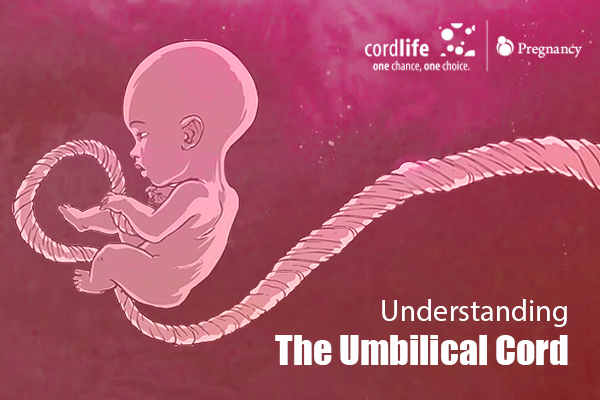Table of Contents
The umbilical cord is a connection between mom and her baby that begins well before the baby is born. Whatever the baby needs for survival inside the womb reaches him/her via this cord. Not only does it supply blood to the developing fetus, but it also carries essential nutrients to the womb.
The Make-up of the Umbilical Cord
The umbilical cord is a rope-like structure with a thin exterior covering called Wharton’s jelly that attaches itself to the centre of the placenta. It contains two tiny arteries and a vein. The job of these blood vessels is to supply adequate blood and oxygen to the growing fetus and to transport necessary nutrients from the placenta. The umbilical cord grows up to 50 centimetre in length and 2 centimetres in diameter during the pregnancy. The cord also consists of stem cells that can be used for treating various life-threatening diseases like cancer and anemia. Parents have the option of cryo-preserving the cord blood cells in private cord blood banks to be used later if needed.
The umbilical cord is usually coiled up resembling a spring inside the womb. This allows the baby to move around without any resistance. Once your baby is delivered, the cord-cutting is done almost immediately. It is a painless process as there are no nerves in the umbilical cord.
The Various Components Of the Umbilical Cord and Their Functions
Arteries: The main role of the two arteries is to carry blood from the baby to the placenta. Along with the blood, they also carry carbon dioxide and other waste products. The arteries close soon after delivery to prevent blood loss to the placenta.
Vein: This carries oxygen from the red blood cells in the mommy’s body through the placenta and to the growing baby. It also carries essential nutrients needed for the baby’s development. The vein takes a little longer to close, generally around 3-4 minutes. Hence, delayed cord clamping allows more nutrients to be passed on to your baby even after birth.
Cord Blood: The umbilical cord contains excess blood which the baby doesn’t require after being born. This cord blood contains elements of regular blood along with potent stem cells that can be used to treat 80 diseases. These stem cells can be harvested and preserved by cryogenically freezing them for future usage. Your baby’s umbilical stem cells can be used to treat diseases in any of his/her immediate family members. This is because the cord blood contains the most primitive form of stem cells which can adapt to a new host body. The chances of the new body rejecting the umbilical cord blood cells (Graft-Versus-Host-Disease) is relatively low.
Once your baby is born, and the cord has been cut, there will still be a stump left behind. This stump will dry in due course and eventually falls off on its own. Mommy has to make sure the stump is kept clean and dry to prevent any infection in the baby. Once the stump has fallen off, the baby’s navel will appear in the exact same spot.
